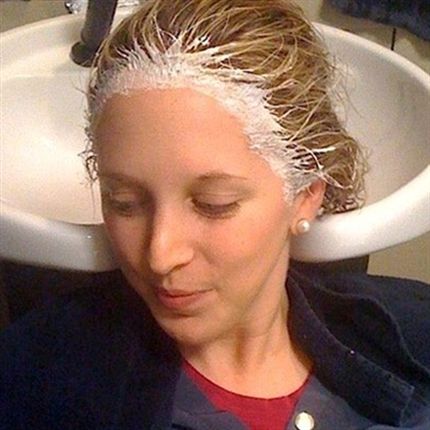How To: Breaking the Base
You’ve heard the term, but opinions seem to be all over the place about this technique—and you don’t know what to believe! Luckily, BTC got the low-down from some of the top color experts in the biz—including Beth Minardi and John Simpson. Breaking the base can be tricky, but it can pay off big time! Here’s what you need to know.
“Breaking the base takes the edge off of the space between a very dark natural level and a light highlight by diminishing the contrast. When I break the base, I work within one or two levels of the base color—otherwise it becomes a single process. I like to apply my base breaking formula after highlighting—at the scalp zone or in-between the foils—then process just 10 to 12 minutes to get a quick shift. It softens the natural base shade and really lets those highlights shine!”
—John Simpson, International Goldwell Guest Artist
“Breaking the base is interesting because people think it’s easy—but it actually requires a lot of control. I define breaking the base as lightening the hair one level, or slightly less than one level to soften, rather than change, the current color. We have to be careful when breaking the base in brunette hair because we can encounter unwanted red tones; and with blondes, we can produce too much gold. Two products—Joico Base Breaker and Joico Base Breaker Cool—are ammonia-free formulas that provide one level of lift in 10 to 15 minutes with control and shine. My favorite formula for controlling warmth is 1 oz. Base Breaker + 1 oz. Base Breaker Cool + 2 oz. 20-volume developer. Use a bottle and apply the formula in neat, tiny sections. Process at room temperature for 12 minutes, rinse, shampoo, condition and dry the hair for a softly broken base.”
—Beth Minardi, Mark Garrison Salon in NYC
“At our Loft Salon, a base adjust is a wonderful way to soften the client’s natural color, without causing a noticeable line of demarcation. I love using this technique on my younger, fashion forward clients that come in every four-to-six weeks. We have had the opportunity to work with Gina Khan, the queen of base shifting, who advises that one of the biggest mistakes colorists make is leaving the formula on the head for too long. It must go on and come off quickly to avoid producing lift, thereby exposing too much warmth. One note—I do not like base adjusts on my mature, gray-coverage clients. I believe these clients should have deeper base levels because nothing makes a woman look older than not having a base color. I prefer giving these clients lower level base tones with strong highlights for a more youthful appearance.”
—Michael Albor, The Loft Salon in Boston







